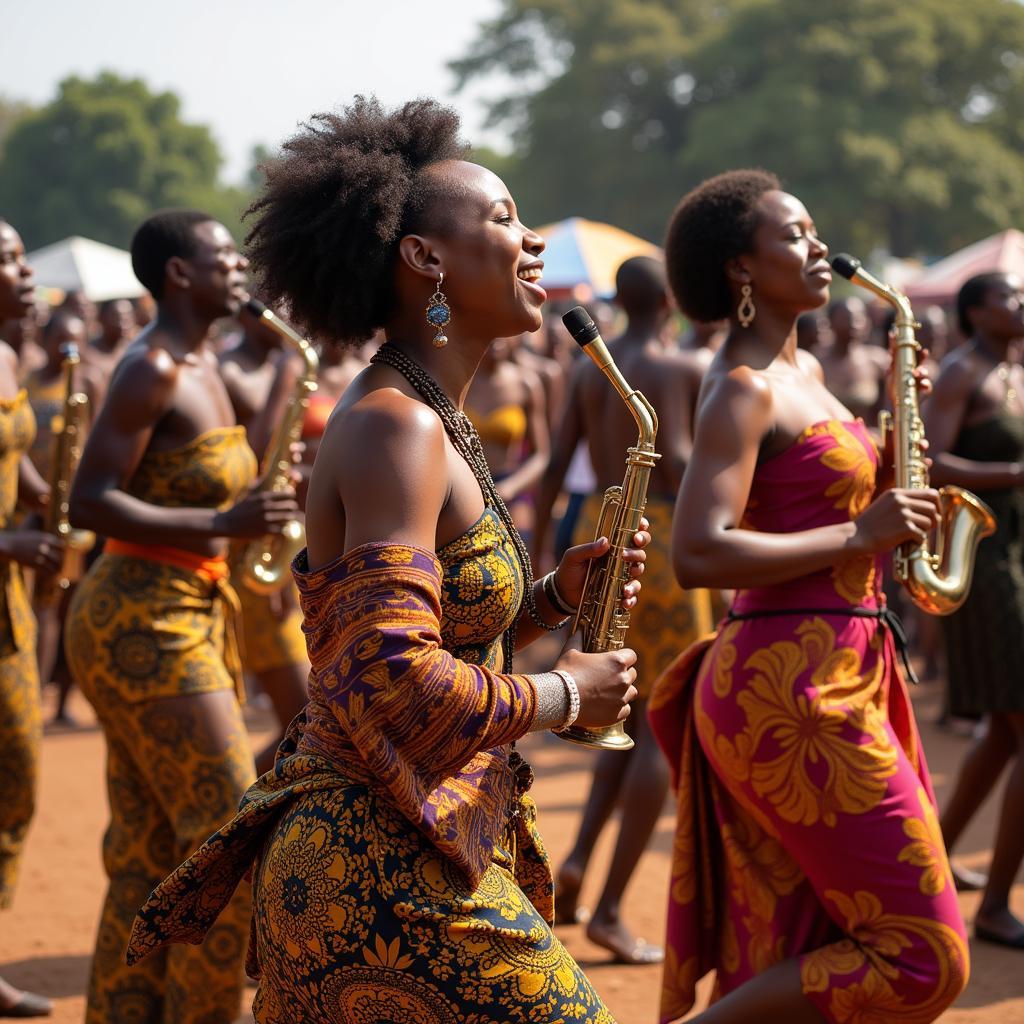Accessories of Mali African Culture
Mali’s rich cultural heritage is beautifully reflected in its diverse array of accessories. These adornments are more than just decorative; they tell stories of history, status, and beliefs. From intricately crafted jewelry to symbolic headwear, accessories of Mali African culture offer a glimpse into the heart of this West African nation. They are integral to Malian identity and provide a tangible connection to the past.
Unveiling the Significance of Accessories in Mali African Culture
Accessories play a vital role in Malian society, signifying social standing, ethnic affiliation, and even spiritual beliefs. They are often passed down through generations, becoming treasured heirlooms imbued with family history and tradition. These items are not merely fashion statements but powerful symbols that communicate a deeper meaning. Whether it’s a beaded necklace, a woven bracelet, or an elaborate headdress, each accessory tells a story.
The Art of Malian Jewelry: More Than Meets the Eye
Malian jewelry is renowned for its craftsmanship and the use of diverse materials. Gold, silver, and bronze are commonly used, often intricately worked into elaborate designs. Beyond precious metals, artisans skillfully incorporate materials like beads, shells, and leather, creating unique pieces that reflect the region’s natural resources and artistic ingenuity.
The Tuareg people, known for their nomadic lifestyle and distinctive blue veils, are particularly famous for their silver jewelry. Their intricate crosses, known as “Croix d’Agadez”, are not only decorative but also serve as important cultural markers, signifying their belonging to specific Tuareg confederations.
Headwear in Mali: A Crown of Culture
Headwear in Mali is incredibly diverse, ranging from simple turbans to elaborate headdresses adorned with beads and feathers. These head coverings often signify social status, marital status, or religious affiliation. For example, the elaborate headdresses worn by some ethnic groups during ceremonies are a testament to the importance of tradition and ritual in Malian culture.
The bogolanfini, or mud cloth, is another significant element in Malian textile arts. Often used for headwraps and other garments, its distinctive patterns and symbolism further enhance its cultural importance. Each symbol woven into the bogolanfini tells a story, adding another layer of meaning to the accessories of Mali African culture.
Beyond Adornment: The Practical Uses of Accessories of Mali African Culture
While aesthetics and symbolism are paramount, practicality also plays a role in the design of Malian accessories. Leather bags and pouches are essential for nomadic life, providing durable and functional storage solutions. Similarly, woven baskets and mats, often intricately decorated, serve both practical and aesthetic purposes. These everyday objects demonstrate the seamless blend of form and function in Malian artistry.
Exploring the Diversity of Accessories Across Mali’s Regions
From the bustling markets of Bamako to the remote villages of the Dogon country, each region of Mali boasts its own unique style of accessories. This diversity reflects the country’s rich tapestry of ethnic groups and cultural influences. The accessories of Mali African culture offer a fascinating journey through the country’s varied traditions.
Dr. Aminata Diarra, a renowned anthropologist specializing in West African cultures, explains, “The diversity of accessories in Mali reflects the intricate social fabric of the nation. Each piece tells a story, revealing the wearer’s identity and place within their community.”
Conclusion: A Journey Through Malian Culture Through its Accessories
The accessories of Mali African culture are a testament to the country’s rich artistic heritage and vibrant cultural traditions. From the intricate jewelry of the Tuareg to the symbolic headwear of various ethnic groups, each piece offers a glimpse into the heart of Malian society. These adornments are more than just decorative objects; they are powerful symbols of identity, history, and belief. By exploring the accessories of Mali African, we embark on a captivating journey through the soul of this fascinating nation.
FAQ
-
What are some common materials used in Malian accessories?
Common materials include gold, silver, bronze, beads, shells, leather, and textiles like bogolanfini (mud cloth). -
What is the significance of the Tuareg cross?
The Tuareg cross, or “Croix d’Agadez,” is a symbol of cultural identity and belonging to specific Tuareg confederations. -
How does headwear signify status in Mali?
Headwear can indicate social status, marital status, or religious affiliation, varying greatly across different ethnic groups. -
Where can I find authentic Malian accessories?
Authentic Malian accessories can be found in local markets throughout Mali, as well as from reputable online retailers specializing in fair trade crafts. -
What is bogolanfini?
Bogolanfini is a traditional Malian mud cloth, often used for headwraps and clothing, featuring symbolic patterns.
Common Scenarios and Questions
Scenario: You are traveling to Mali and want to purchase authentic accessories.
Question: Where are the best places to find authentic Malian accessories, and how can I ensure I am buying ethically sourced items?
Scenario: You are researching Malian culture for a school project.
Question: What are some key examples of accessories that demonstrate the diversity and symbolism within Malian culture?
Further Exploration
For further information on Malian culture and arts, you can explore other articles on our website, such as “The Art of Bogolanfini: Exploring Mali’s Mud Cloth Tradition” and “The Music of Mali: A Rhythmic Journey Through West Africa.”
Need assistance? Contact us 24/7: Phone: +255768904061, Email: [email protected], Address: Mbarali DC Mawindi, Kangaga, Tanzania. We have a dedicated customer service team ready to help.
